The wood pigeon is the largest pigeon in Europe, it is much larger and stockier than other pigeons. The throat is pink-purple, pulling toward pale gray on the belly.
Wood Pigeon
In Flight
Wood Pigeon
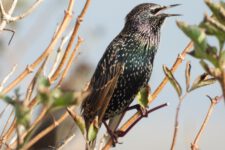
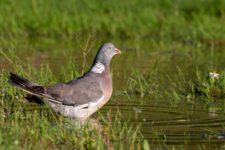
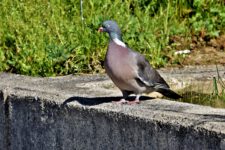
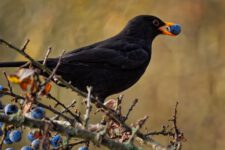
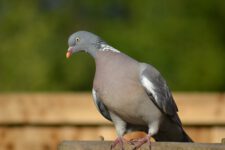
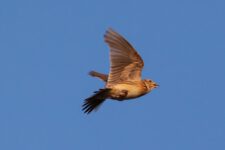
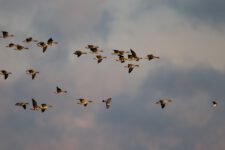
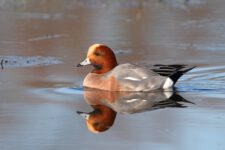
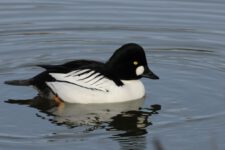
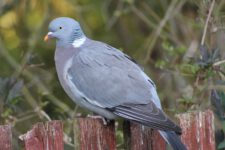
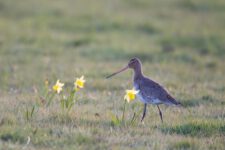
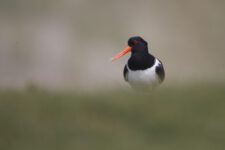
Excerpt from the internship report of the Masters University of Rouen-IMPCF of Hugues SANTIN-JANIN September 2004.

Photographed by: Florian Weber
Species : Wood Pigeon / Columba palumbus
English name : Woodpigeon Family: Columbidae
Cut : 41cm
Span : 75-80
Weight : 450 to 520 grams
Longevity : 16 years old
Aspect
The wood pigeon is the largest pigeon in Europe, it is much larger and stockier than other pigeons. The throat is pink-purple, pulling toward pale gray on the belly. The head is gray, with distinct white patches on the side or neck (except in young people, duller). Thighs, legs and feet are yellow. The tail is broad, and has a broad dark band at its end. In flight, a white line crossing the middle of the wing becomes visible. Its beak is slightly hooked (unlike other European pigeons), this beak is made to tear the leaves. The other name of the Wood Pigeon is the Palombe.
Geographical Distribution
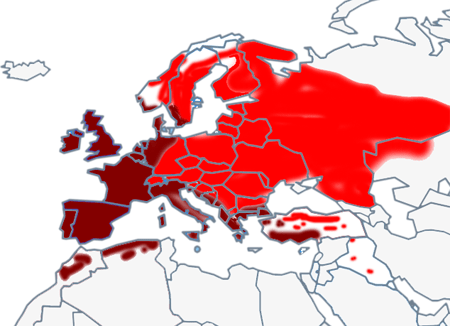
 : ( from CRAMP, 1985 )
: ( from CRAMP, 1985 )
 : Present all year long
: Present all year long
Present only during the breeding season
In France, we can observe breeding, migratory and wintering individuals. This species is very common throughout the national territory. It is found in open countryside of all types, provided it is dotted with a few trees. But also in clear woods, mixed forest edges, parks and public wooded gardens, close to crops and fields for food. Thus, it is found everywhere in Europe, in rural areas, but also in the suburbs and in the heart of cities.
Reproduction
The breeding range of this pigeon extends from the maritime and Mediterranean countries of the old continent to the western foothills of the Himalayas, at latitudes between 30 ° and 65 ° N. Nesting takes place from the level of the sea up to 3000m in the most Asian part of the range.
The breeding season differs according to the localities, and the types of habitats. For example, the nesting of the urban wood pigeons begins already at the end of February, while that of the rural pigeons is not observed before mid-March, and sometimes even mid-April (CRAMP, 1985).Overall, birds from the southern and western regions breed earlier than others because climatic factors are more favorable and food resources are more available. In France, the earliest Wood Pigeons breed only from late March or early April. Here are the main characteristics of woodpigeon breeding:
Number of broods: two to three broods, depending on the amount of food available
Number of eggs: 2 white eggs
Incubation: 17 days (2 sexes)
Nest: The Wood Pigeon nests in tree rows of all species, in abandoned crows’ nests and squirrel nests, sometimes on the ground or on the edges of urban buildings. The rudimentary nest is composed of a few branches leaving guess the eggs
Type of nest box: Do not use nest boxes
Flight: 20 to 35 days
Emancipation: about 42 days
Emancipation: about 42 days Survival rate: 64%
Couples are faithful during the same breeding season and may remain united, in some cases, for several consecutive years
Migration
The species is partial migratory (diurnal migrant). Birds from the temperate and southern regions of Europe do not undertake migration, while northern and continental birds migrate to spend the “bad season” on the Atlantic coast of Europe, in the Iberian Peninsula , northern Mediterranean shores, Turkey and the Middle East.
In our country, sedentary birds are joined at the end of September by many migrants (Yeatman, Berthelot & Jarry, 1994). These converge towards the western end of the Pyrenees. Crossing the passes of the Basque Country, to the Iberian winter quarters, gives rise to sometimes spectacular local concentrations. CRAMP (1985) locates the peak of passage of postnuptial migration in France between 10 and 20 October. He locates the return migration to Europe between March and April.
For the past ten years, the cultivation of maize, which now extends throughout the South-West, has radically changed the ancestral habits of the birds that are settling more and more numerous at the foot of the Pyrenees which they give up cross the passes. The development of this wintering seems to concern populations of Medio-European origin.













